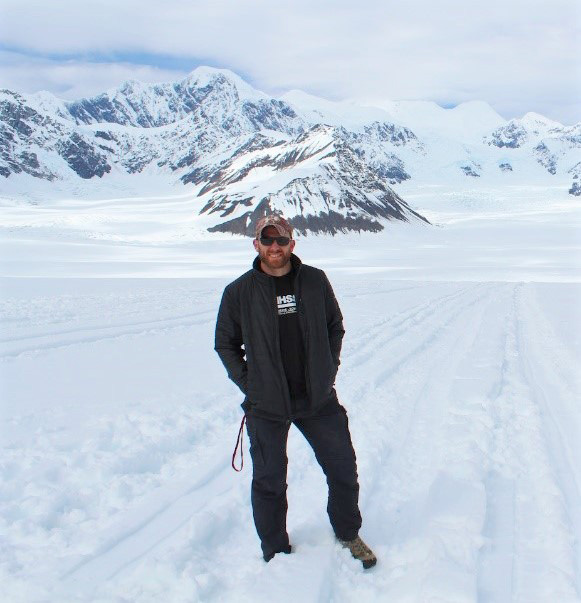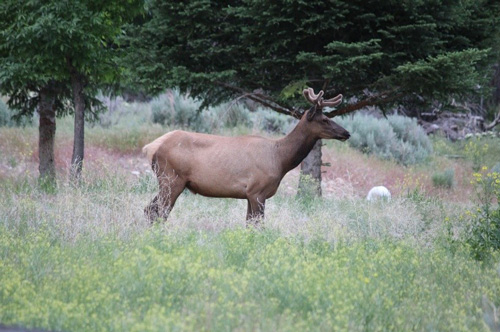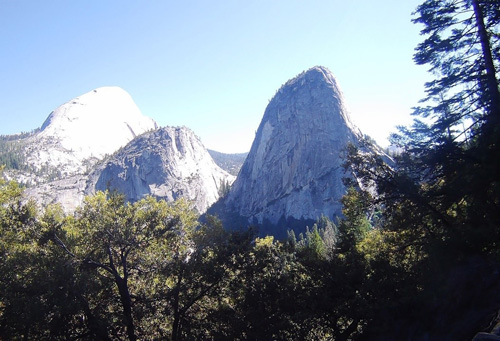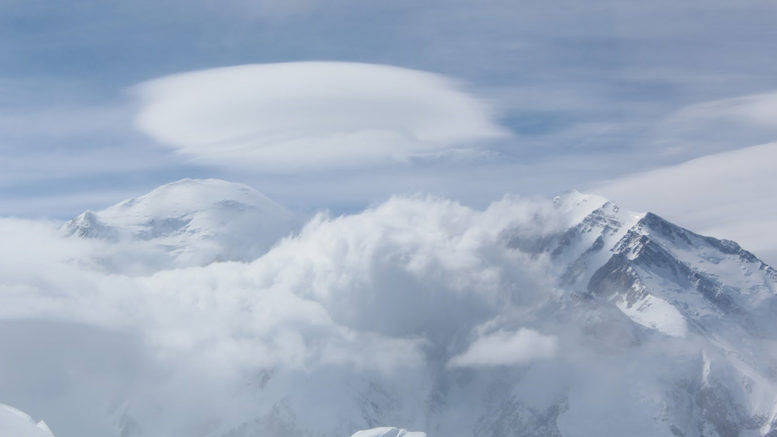Thanks to a Teacher Creativity Fellowship Grant through the Lily Endowment, Jon Kirschner, Hamilton Heights AP economics and U.S. history teacher, realized a dream of traveling through parts of the western United States and Alaska, America’s last frontier. Through this opportunity, Kirschner was able to combine three of his favorite things: Running, photography and teaching. Kirschner, whose grant request was entitled, “Running and Flipping through the West,” was among the 100 selected from a competitive pool of 520 qualified applicants throughout the state.

Kirschner spent three weeks in June traveling out west and to Alaska on a Teacher Creativity Fellowship Grant from the Lilly Endowment. Kirschner is pictured standing on the glacier where the plane landed more than 17,000 feet above sea level. (Photo provided)
“This grant application was not an easy feat,” recalled Kirschner, who remained undaunted after his first grant submission request was not accepted the year prior. He recalibrated, continued his research, resubmitted and was successful the second time around.
“I feel honored and lucky to be among those to receive the $12,000 grant,” said the 33-year-old Kirschner, who has been teaching at Heights for five years and coaching for over a decade.
As a child, Kirschner was fascinated with all things Wild West. In fact, his middle name came from his parents’ love of John Wayne and his movies. Kirschner followed suit, watching those same John Wayne movies with intrigue and desire to experience the terrain, history, wildlife and culture of this part of the country. Listening to the adventures and travel stories of his Uncle Bill, a history teacher and a principal who also held a love of the West, only deepened Kirschner’s interest.
Kirschner, also Heights’ head football coach and the strength and conditioning coach, said he has been preparing for this opportunity his entire life. With a video camera in hand, he documented through pictures and videos every aspect of his trip which took him through the vast trails and terrain of two of the country’s most notable national parks, Yellowstone and Yosemite, and to Alaska’s vast wilderness.
Breakdown of each leg of the journey
“Yellowstone National Park was all about the wildlife,” said Kirschner, who will be forever grateful for the opportunity to visit this place and cannot wait to return with his son (Owen, age 3) and daughter (Emerson, set to arrive in April).

This bull elk was among the wildlife Kirschner was hoping to see during his trip. In addition to the bull elk, he also saw two wolves, three grizzly bears and six black bears while he was at Yellowstone National Park. (Photo provided)
“If you want to see the wildlife that makes us who we are as a nation, go to Yellowstone,” said Kirschner. “Yosemite in California was more than my wife and I could have imagined in the awe and splendor of its physical geography. You name it – Yosemite Valley, El Capitan, Half Dome – no matter where you went in the park it was a never-ending panoramic view of pure beauty. Alaska is on another playing field. Whether I talk about the wildlife or physical geography, Alaska holds a special place in my heart. The song by John Denver called Alaska and Me (John Denver: “Here’s to Alaska, here’s to the people, here’s to the wild, and here’s to the free!!”) best describes my experience in Alaska. I hiked in Denali National Park, landed on a mountain Glacier (17,000+ feet in elevation), flew around Mt. Denali, rode ATVs through Alaskan backcountry and took a day trip through Kenai National Park starting in the port town of Seward, Alaska.”
Taking it back to the classroom
Kirschner brought back a plethora of educational opportunities from his travels to supplement many of his current chapters. “The lessons and information from this once-in-a-lifetime experience have helped me to bring history and geography to life for my students through a first-person account,” he pointed out.
“I have taught a lesson in U.S. history concerning the impact John Muir, The Sierra Club and 26th U.S. President Theodore Roosevelt had on the development of the National Park System and the opportunity I had to see these places in their entirety today,” siad Kirschner. “From a geographical standpoint I have discussed the differences in climate zones and the differences in the mountains out west versus the mountain ranges in the eastern United States. From an economic focus I have used the examples of the money I spent on the trip, about budgeting, and the taxation process I experienced as a part of the trip. Economically, I discussed with students when you are on the go constantly you come to realize how little financially you can live on and the major changes that you need to make to your lifestyle when you no longer have the normal amenities used to in our daily lives at home. Finally, from a strength training standpoint discussing the physical and mental preparation for the races, especially in the mountains, and the toll constant hiking and running in altitudes of 6,000 to more than 10,000 feet has on the body.”

This photo was taken at Yosemite during Kirschner’s 18.6-mile hike of the Half Dome. (Photo provided)
“The trip has been one of the most remarkable experiences of my life,” Kirschner reflected of his three-week adventure. “As in most people’s lives the day they get married and see their children born are top moments of their lives, and for me that’s no different. Beyond those moments this trip is next on my list of life’s most memorable. It was a blessing to have been able to share two-thirds of this journey with my wife, Brittany (Yellowstone and Yosemite). Most people have a bucket list of places they want to go, do, etc. Mine is a little different in that I my bucket list includes seeing the following animals in the wild: Gray wolf, grizzly bear, black bear, and a bull elk.”
Kirschner accomplished this on the first leg of his journey at Yellowstone National Park.
About the Teacher Creativity Fellowship Program
The Teacher Creativity Fellowship Program is one of the Endowment’s longest standing programs and began as a way to help Indiana public school teachers renew their commitment to teaching. Since its inception in 1987, the program has expanded its eligibility to teachers in private and parochial schools, to principals and assistant principals, and to school counselors and media specialists. The commitment behind this competitive program is to recognize, re-energize and support Indiana educators.

